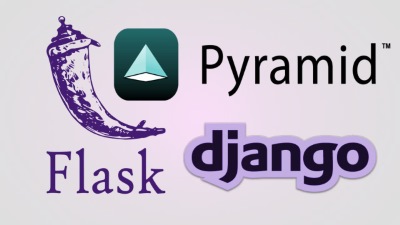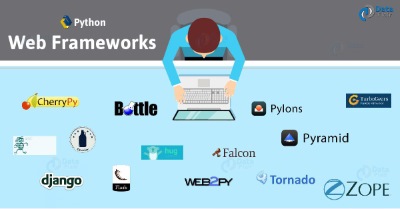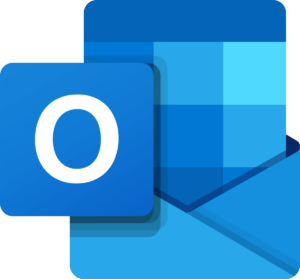Introduction
Python has become one of the most popular programming languages for web development due to its simplicity, ease of use, and powerful libraries. With its growing popularity, the need for efficient and robust frameworks has increased, leading to the development of several Python frameworks for web development. In this comprehensive guide, we will explore the top Python frameworks for web development and their unique features.


Django
Django is a high-level Python web framework that enables fast and easy development of secure and maintainable web applications. It follows the Model-View-Template (MVT) architectural pattern and provides an Object-Relational Mapping (ORM) layer to interact with the database. Django also offers an Admin interface for managing the application and user authentication features.

Web2Py
Web2Py is a full-stack Python web framework that provides a complete solution for web development. It includes an ORM layer, form generation, authentication and authorization features, and a built-in administrative interface. Web2Py also offers a unique feature known as “scaffolding,” which allows developers to quickly generate a working application based on a model.

Flask
Flask is a micro-web framework that is designed for small to medium-sized web applications. It is a minimalistic framework that provides only the essentials for web development and allows developers to build custom solutions. Flask offers a simple and flexible architecture, allowing developers to easily add functionality as needed. It also supports extensions, allowing developers to easily add new features to their applications.
Pyramid
Pyramid is a flexible and high-level web framework that is suitable for a wide range of web applications. It provides a clear and concise URL dispatch mechanism, enabling developers to easily define URL patterns. Pyramid also provides a range of features, including template engines, testing frameworks, and support for databases and web services.
CherryPy
CherryPy is a minimalist Python web framework that provides a minimal set of tools for building web applications. It is designed to be fast and lightweight, making it ideal for small to medium-sized web applications. CherryPy offers a flexible architecture that allows developers to add new features and functionality as needed.
Tornado
Tornado is a Python web framework designed for building high-performance web applications. It is a non-blocking framework that is designed to handle a large number of simultaneous connections, making it ideal for real-time applications such as chat applications and online games. Tornado also offers a range of features, including support for WebSocket and asynchronous request handling.
Conclusion
In conclusion, Python has a range of frameworks for web development, each offering its own set of features and advantages. Django is a high-level framework that provides a range of features for building secure and maintainable web applications. Flask is a minimalistic framework that is suitable for small to medium-sized web applications. Pyramid is a flexible framework that is suitable for a wide range of web applications. Web2Py is a full-stack framework that provides a complete solution for web development. CherryPy is a minimalist framework that is designed for fast and lightweight web applications. Tornado is a non-blocking framework that is designed for building high-performance web applications.
Advantages of Python | Disadvantages of Python
Everything has its pros and cons. Similarly, every programming language also has its advantages and disadvantages.
While learning a programming language, it is a good option to know about these. It helps to take full advantage of the language being conscious of the negatives. So, let us know about the advantages and disadvantages of Python.
Advantages of Python Programming Language
1. Easy to read, learn and code
Python is a high-level language and its syntax is very simple. It does not need any semicolons or braces and looks like English. Thus, it is beginner-friendly.
For example, to print “PythonGeeks” you have to write one line, i.e., print(“PythonGeeks”). This gives ease while learning, reading code and coding in Python.
Due to its simplicity, its maintenance cost is less.
2. Dynamic Typing
In Python, there is no need for the declaration of variables. The data type of the variable gets assigned automatically during runtime, facilitating dynamic coding.
3. Free, Open Source
It is free and also has an open-source licence. This means the source code is available to the public for free and one can do modifications to the original code. This modified code can be distributed with no restrictions.
This is a very useful feature that helps companies or people to modify according to their needs and use their version.
4. Portable
Python is also platform-independent. That is, if you write the code on one of the Windows, Mac, or Linux operating systems, then you can run the same code on the other OS with no need for any changes.
This is called Write Once Run Anywhere (WORA). However, you should be careful while you add system dependent features.
5. Extensive Third-Party Libraries
Python comes with a wide range of libraries like NumPy, Pandas, Tkinter, Django, etc.
The python package installer (PIP) helps you install these libraries in your interpreter/ IDLE. These libraries have different modules/ packages. These modules contain different inbuilt functions and algorithms. Using these make the coding process easier and makes it look simple.
6. Wide Range of Applications
Python has many applications like web development, making desktop GUIs, app development, artificial intelligence, data science, etc. It has become a preferred language by the professionals in many areas like engineering, mathematics and science.
7. Extensible and Integrable to Other Programming Languages
In addition to having libraries like CPython and Jython, it can extend to other languages like C, C++. This feature helps while building projects.
It can also integrate with C, C++, and Java, helping in cross-platform development and also in using the strong features of each language. This makes Python a powerful language.
8. Interpreted Language
Python is an interpreted language. The code gets executed line by line till an error is encountered if any.
If an error occurs at a line, it stops execution and gives that error to the console. This leads to an easier and step-by-step debugging process.
9. Functional, Object-Oriented, and Procedural
It is a procedural, functional, and object-oriented language. Procedural means the code gets executed in the top to bottom fashion.
A functional language works based on functions, rather than just statements. A function is a collection of codes that takes input and gives output.
Information is treated as a real-world object with properties and behaviors in object-orientated language.
10. Involvement in Large Projects.
It is used for implementation in big projects and software like YouTube, Google, Yahoo. It is also a preferred language by many companies in various fields like education, medical, research, etc.
11. Memory Management
Python also excels in managing its memory by using a separate library for this purpose. It uses a private heap to hold all the objects and data structures. And a built-in memory manager handles this heap. This property of Python makes it stand out from the other programming languages.
12. Improved Productivity
The fact that the syntax of python is very easy and short, allows more productivity. Developers can focus more on the algorithm, rather than on coding.
13. Vast Community
Python has an active and big community that helps in doing continuous additions to it. It also allows the availability of the information on Python at ease to the developer.
Some other advantages include
- Integration to IoT devices like Arduino, Raspberry Pi, etc.
- It does not lead errors to a segmentation fault.
- It is also very easy for asynchronous coding, like coding blocks including loops.
Disadvantages of Python
1. It’s Simple Nature
Are you wondering how this feature under advantage also is coming as a disadvantage?
Then the answer is Yes! Its simplicity is making it hard for a programmer to adjust to the syntax of the other programming languages.
For example, a coder might forget to declare a variable in C falling into an error.
2. Slow Speed and Memory Inefficient
The interpreter in Python executed the code line by line, which increases the overall time. The dynamic typing feature also decreases the speed. This is because it has to do extra work during runtime. It requires a large amount of memory too!
3. Weak Mobile Computation
Python has many applications on the server-side. But it is hardly seen on the client-side or in mobile applications. The main reasons for this are:
- It occupies a lot of memory.
- This makes the process slow.
- It also does not facilitate security
4. Poor Database Access
Python databases are weak compared to other technologies like JDBC (Java DataBase Connectivity) and ODBC (Open DataBase Connectivity). This limits its use in high enterprises.
5. Runtime Errors due to dynamic typing
Because it’s a dynamically typed language, you do not need to declare any variable and a variable storing an integer can store a string later. This might happen unnoticeably but leads to runtime errors while doing operations.
This is a restriction on the design of the Python programming language. Also, all errors show up only during runtime. So, it is difficult to test.
There are some other disadvantages like:
- It does not allow multithreading. To achieve multithreading in Python, a developer can extend Python to C extensions, PyPy, JPython, and IronPython.
- Besides being a functional programming language, it does not support functional optimization. In addition, it also falls behind due to a lack of basic features.



